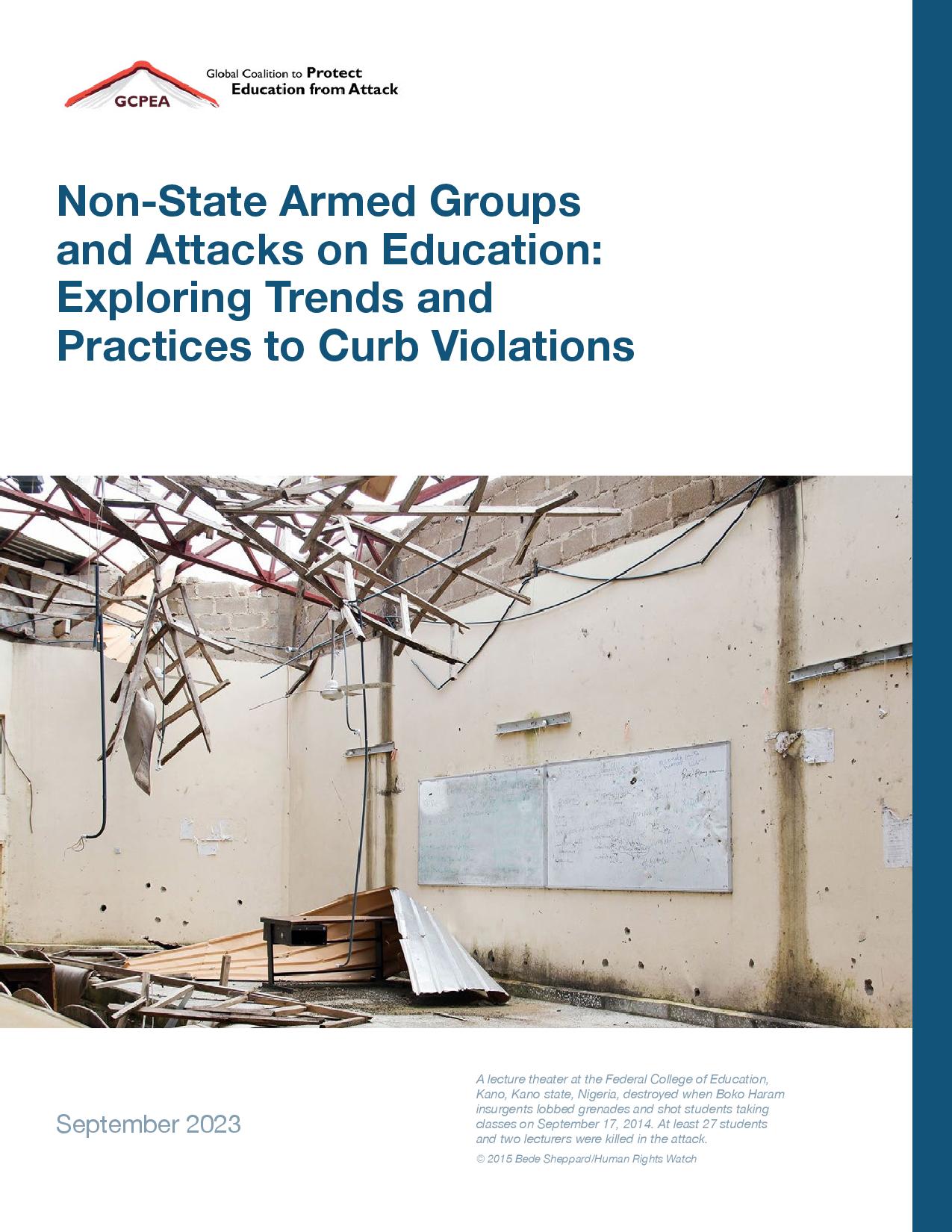GCPEA News
Protecting Education Newsletter, December 2016
GCPEA, December 21, 2016
To read the full Newsletter, please click here.
Message from the Secretariat
As 2016 comes to a close and we take stock of the global landscape of attacks on education, it is clear that the year has held both progress and challenges. Attacks on education continue to take place in situations of conflict and insecurity around the world, occurring in the gravest of humanitarian situations as well as in countries experiencing protracted conflict or regional violence. While the world watches war decimate Syria, the country’s future is also being destroyed as schools are targeted and bombed. In just the past two months, airstrikes and rockets have hit at least 12 schools, including a school complex in Idlib – an attack that killed approximately 22 students and six teachers, according to international media and NGOs. Elsewhere, students and teachers continue to risk their lives to learn and teach, such as in Colombia where remnants of conflict continue to affect education despite the signing of a peace agreement in November 2016, or in the Philippines, where the use of schools as polling stations in April provoked grenade and rocket attacks, according to local media. These attacks – and the others that GCPEA is tracking for its 2018 edition of Education under Attack (see the 2014 publication here) – remind us of the imperative for increased monitoring of violations of the right to education and accountability for perpetrators of attacks.
Despite this challenging panorama, 2016 has also seen progress in a number of efforts to address attacks on education. With more countries signing on to the Safe Schools Declaration, the total number of endorsing countries stood at 56 at year’s end. The rapid progress since the Declaration was launched in Oslo in May 2015 illustrates growing public consensus that protecting learners, instructors, and educational institutions is both a necessity and a priority. We look forward to the Second International Conference on Safe Schools, which Argentina will host in Buenos Aires on March 28-29, 2017. This conference will provide an important opportunity to build on the momentum behind the Declaration, and GCPEA will be encouraging many more states to endorse in the lead-up to the conference.
2016 also showcased endorsing states’ commitment to implementing the Declaration. In November, GCPEA, Norway, Sierra Leone, and Zambia, with support from the Save the Children Pan-African African Union Liaison Office, hosted a workshop in Addis Ababa for representatives from ministries of defense and education, as well as national armed forces
State attendees represented 13 African states that have endorsed the Safe Schools Declaration. The event also included participation by regional and international peacekeeping and education experts. The workshop focused on how governments can fulfill the commitments outlined in the Safe Schools Declaration and integrate the Guidelines for Protecting Schools and Universities from Military Use During Armed Conflict into relevant domestic legislation, policies, and operational frameworks. The workshop also featured the testing of a draft toolkit on understanding and implementing the Guidelines, which is being developed through a partnership between GCPEA and the Roméo Dallaire Child Soldiers Initiative.
The event in Addis Ababa highlighted the proactive ways that different states and armed forces are working to protect education. For example, the Director General of Somalia’s Ministry of Defense told of how, in 2015, coordination between his Ministry and the Ministry of Internal Security led to security forces being deployed to examination sites, allowing 7,000 Somali students to take their final examinations. He said that this was the first time these exams had been held in 25 years. In the Central African Republic, the United Nations Multidimensional Integrated Stabilization Mission (MINUSCA) published a press release condemning the military use of some schools by armed groups and calling on them to refrain from such activity. Armed groups subsequently vacated five schools.
Also in 2016, GCPEA published technical guidance illustrating what states, the UN, NGOs, and school communities can do to protect schools and universities from attack. On November 28th, we launched the Guide to Implementing the Principles of State Responsibility to Protect Higher Education from Attack at an event in Paris, France, hosted by the Norwegian Delegation to UNESCO, and sponsored by Protect Education in Insecurity and Conflict.
The Guide elaborates on how states can fulfil their obligation to protect education through the immediate and full investigation of all attacks, risk analysis, and assistance for victims, among other measures. We also released a new report, What Schools Can Do to Protect Education from Attack and Military Use, documenting how principals, teachers, and community members in conflicts worldwide can work within schools to protect them from violence by armed parties, such as through comprehensive safety and security plans.
We hope that all of this work will serve those most affected by attacks on education and that our publications will be resources for those working directly to protect students, teachers, and education institutions from attack and military use. Many thanks to all who have supported GCPEA’s activities this past year, and our best wishes for 2017.



